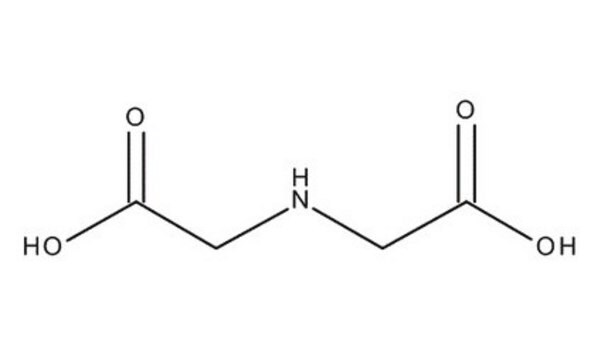C3279
Copper(II) chloride dihydrate
powder, BioReagent, suitable for cell culture
Synonyme(s) :
Cupric chloride dihydrate
About This Item
Produits recommandés
Source biologique
synthetic (inorganic)
Niveau de qualité
Gamme de produits
BioReagent
Forme
powder
Technique(s)
cell culture | mammalian: suitable
Solubilité
water: 100 mg/mL, clear, blue
Chaîne SMILES
O.Cl[Cu]Cl
InChI
1S/2ClH.Cu.2H2O/h2*1H;;2*1H2/q;;+2;;/p-2
Clé InChI
MPTQRFCYZCXJFQ-UHFFFAOYSA-L
Application
Mention d'avertissement
Danger
Mentions de danger
Conseils de prudence
Classification des risques
Acute Tox. 4 Dermal - Acute Tox. 4 Oral - Aquatic Acute 1 - Aquatic Chronic 2 - Eye Dam. 1 - Skin Irrit. 2
Code de la classe de stockage
8A - Combustible corrosive hazardous materials
Classe de danger pour l'eau (WGK)
WGK 3
Point d'éclair (°F)
Not applicable
Point d'éclair (°C)
Not applicable
Équipement de protection individuelle
dust mask type N95 (US), Eyeshields, Gloves
Faites votre choix parmi les versions les plus récentes :
Déjà en possession de ce produit ?
Retrouvez la documentation relative aux produits que vous avez récemment achetés dans la Bibliothèque de documents.
Les clients ont également consulté
Articles
Importance and uses of copper in serum-free eukaryotic, including hybridoma and Chinese Hamster Ovary (CHO), cell cultures
Notre équipe de scientifiques dispose d'une expérience dans tous les secteurs de la recherche, notamment en sciences de la vie, science des matériaux, synthèse chimique, chromatographie, analyse et dans de nombreux autres domaines..
Contacter notre Service technique












